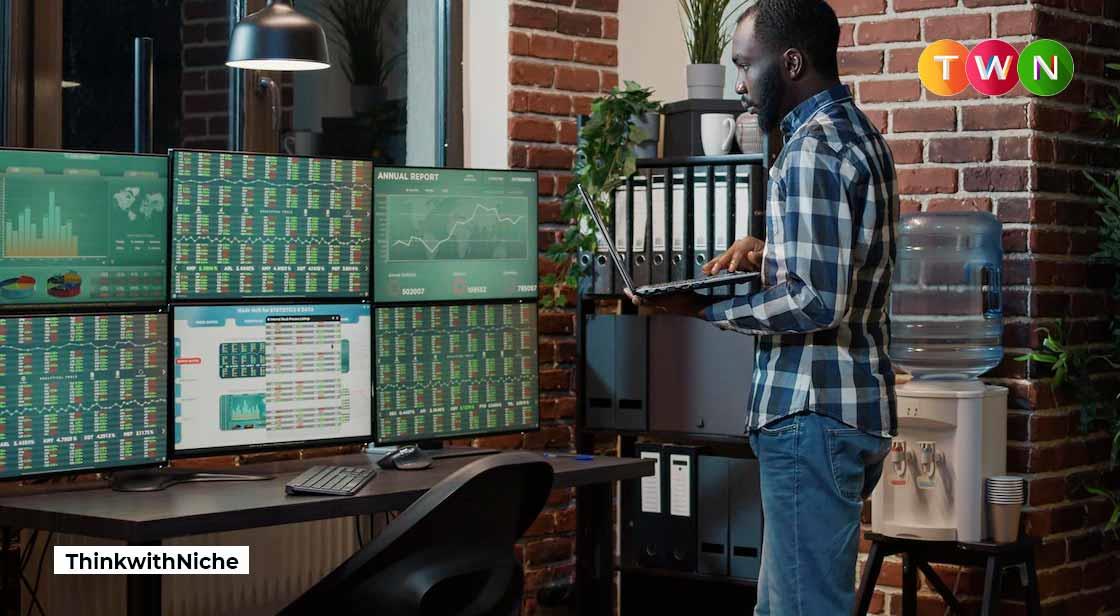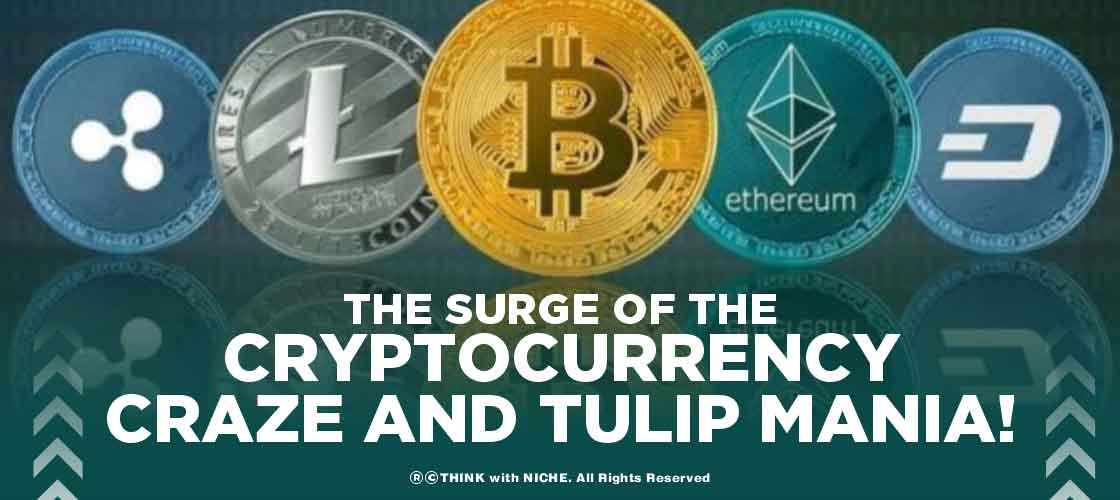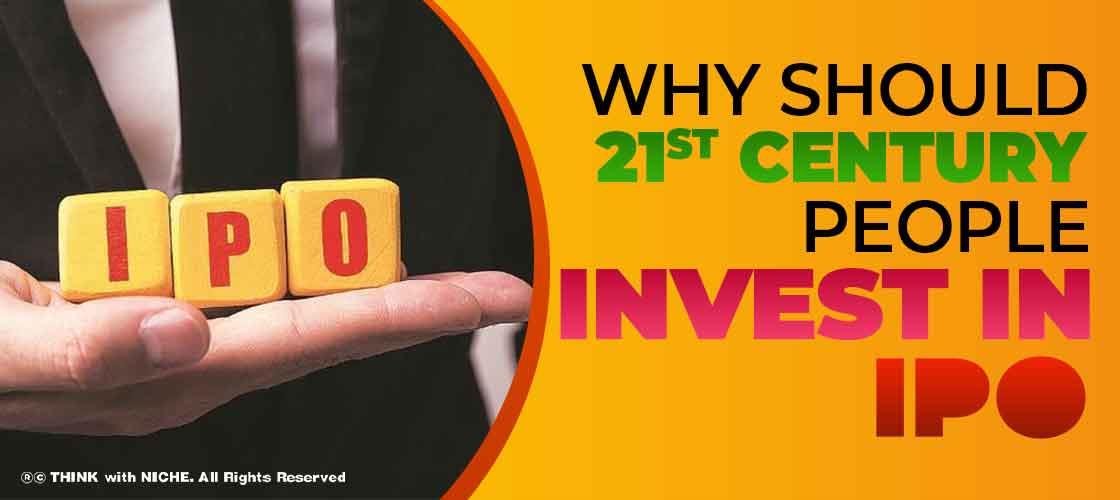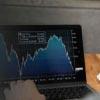ETF – Exchange-Traded Funds

Blog Post
An ETF (exchange-traded fund) is a pooled investment vehicle that works similarly to a mutual fund. ETFs often track a certain index, sector, commodity, or other assets, but unlike mutual funds, they can be bought and sold on a stock exchange just like a regular stock. #TWN
Want the convenience of stock trading with the diversity of mutual funds? ETFs bring the best of both together.
Exchange-traded funds (ETFs) are a type of investment fund that combines the best characteristics of two popular assets: stocks and bonds. They provide the benefits of mutual funds' diversification while simulating the ease with which equities can be traded.
Exchange-Traded Funds Meaning
An exchange-traded fund, or ETF, is a portfolio of securities such as stocks and bonds. ETFs allow you to invest in a large number of assets at once, and they frequently have cheaper fees than other types of funds. ETFs are also easier to trade.
However, ETFs, like any other financial instrument, are not a one-size-fits-all solution. Examine them on their own merits, taking into account administration charges and commission fees (if applicable), ease of purchase and sale, and investment quality.
How do ETFs Work?
The underlying assets are owned by the fund provider, who then creates a fund to track their performance and offers shares in that fund to investors. An ETF's shareholders own a portion of the fund but not the underlying assets. Nonetheless, investors in an ETF that tracks a stock index may get lump dividend payments or reinvestments for the index's stocks.
While ETFs are supposed to replicate the value of an underlying asset or index — such as gold or a basket of stocks like the S& 500 — they trade at market-determined values that are usually not the same as the asset. Furthermore, due to factors such as expenditures, an ETF's long-term returns will differ from those of its underlying asset.
The following is a condensed summary of how ETFs work:
-
An ETF provider considers the entire universe of assets, such as stocks, bonds, commodities, and currencies, and develops a basket of them, each with its own ticker.
-
Investors can purchase a share of that basket, just as they would a company's stock.
-
Like a stock, buyers and sellers trade the ETF on an exchange throughout the day.
How to Invest in ETFs
ETFs can be purchased in a variety of methods, and which one you choose is mostly a matter of personal preference. Investing in ETFs is only a few clicks away for hands-on investors. These assets are a common offering among online brokers, while the quantity of options (and associated fees) varies. Robo-advisors, on the other hand, build their portfolios off of low-cost ETFs, providing hands-off investors access to these assets. One positive trend for ETF investors is that many major brokerages have reduced their commissions on stock, ETF, and options trades to zero.
1. Open an account with a brokerage firm on your own or with a Robo-advisor
If you want to start investing in ETFs on your own, you'll need to open an account with a brokerage firm. Your investments are held in brokerage accounts; just because you have one doesn't mean you're invested in anything. You can invest in ETFs after you've opened an account.
2. Select the ETFs in which you want to invest
It isn't as difficult as it seems, but there are a lot of ETFs to choose from, and narrowing it down might be difficult. You can use online screeners to locate low-cost ETFs: funds focused on specific industries or ETFs with a socially responsible or environmental focus.
3. Purchase the ETF
Navigate to the ETF you want to buy and place the deal using your brokerage's trading feature. Before you make your order official, make sure you double-check it.
4. Keep the ETF in your possession
Your investment plan will determine how long you hold an ETF, but if you're saving for retirement, it's often a waiting game: the longer you hold it, the better. Because of the nature of compound interest, the longer you hold on to an ETF, the more interest you will earn.
If you have a long investment horizon, you'll most likely be able to ride out the stock market's highs and lows as it rises over time.
How much do ETFs Cost?
When it comes to cost, exchange-traded funds can be very different. As of December 2021, the median price of the most popular ETFs by trading volume is $59.42. The most expensive ETF on the list costs $473.56, while the cheapest costs $3.43. That broad range may appear overwhelming, but it also means that an ETF exists for every budget. Before you invest in an ETF, it's a good idea to figure out how much you're willing to pay.
When researching ETFs, keep in mind the expense ratio or the price charged by the fund to manage and maintain it. ETF expense ratios are often cheap when compared to other types of funds because most ETFs are passively managed.
ETF Examples
Despite their apparent simplicity, exchange-traded funds have intricacies that must be understood. With the essentials in hand, you can determine if an ETF is right for your portfolio and begin the exciting task of picking one — or several.
There are many excellent ETFs available, but here are a few of our favorites from our list of the best ETFs.
-
BNY Mellon US Large Cap Core Equity ETF (BKLC)
-
SoFi Select 500 ETF (SFY)
-
JP Morgan Betabuilders U.S. Equity ETF (BBUS)
-
iShares Core S&P 500 ETF (IVV)
ETFs vs. Mutual Funds vs. Stocks
When compared to other investments, exchange-traded funds (ETFs) stand out in several ways. ETFs offer a variety of advantages, including lower investment fees, improved diversification, and a growing number of selections.
ETFs vs. Mutual Funds
ETFs, on average, have lower costs than mutual funds, which is one of their biggest selling points.
ETFs also outperform mutual funds in terms of tax efficiency. A mutual fund (particularly one that is actively managed) has a higher turnover rate than an ETF, and this buying and selling might result in capital gains. When investors want to sell a mutual fund, the manager will need to raise cash by selling securities, which can result in capital gains as well. Those taxes will be borne by investors in any case.
The management structures of the two items are also distinct (typically active for mutual funds, passive for ETFs, though actively managed ETFs do exist).
ETFs vs. Stocks
ETFs, like stocks, are traded on exchanges and have distinctive ticker symbols that allow you to watch their price movement. ETFs, unlike stocks, represent a group of stocks rather than a single firm. ETFs may provide better diversity than a single stock because they own numerous assets. This diversification might help to lessen the risk in your portfolio.
ETFs are occasionally centered on specific industries or themes. For example, one of the ETFs that tracks the S&P 500 is SPY, and there are other amusing ones like HACK, which is a cyber-security fund, and FONE, which is a smartphone ETF.
The following are some important distinctions between ETFs, mutual funds, and stocks.
|
Comparison Base |
Exchange-traded funds (ETFs) |
Mutual Funds |
Stocks |
|---|---|---|---|
|
Cost to Invest |
Varies. The most popular ETFs have a median price of $59.41. |
Varies. Morningstar's top-ranked mutual funds have a median price of $90.88. |
Varies. The S&P 500 businesses have a median share price of $117.78. |
|
Fees |
0.19 percent is the average expense ratio. |
0.50 percent average expense ratio, plus any additional fees. |
The commission cost is usually $0, but it might be as much as $5. |
|
How to Buy |
Traded throughout regular and extended market hours. |
After the markets close at the end of the trading day. |
Traded throughout regular and extended market hours. |
ETF Pros
Because of their simplicity, relatively low cost, and access to diverse products, investors have gravitated to exchange-traded funds. The benefits are as follows:
Diversification
While it's natural to think of diversity in terms of broad market verticals such as stocks, bonds, or a specific commodity, ETFs also allow investors to diversify across horizontals such as industries. Buying all of the components of a specific basket would cost a lot of money and time, but an ETF may bring those benefits to your portfolio with a single click of a button. Diversification can help protect your investments from market fluctuations. If you only invested in one industry and that industry had a difficult year, your portfolio is likely to have suffered as well. Your portfolio will be better balanced if you invest across multiple industries, company sizes, locations, and other factors. You don't have to worry about diversifying your portfolio because ETFs are already well-diversified.
Transparency
Anyone with access to the internet can look up the price action for a certain ETF on an exchange. Furthermore, a fund's holdings are reported to the public every day, whereas mutual funds only do so regularly or quarterly. You can keep a close eye on your investments thanks to this transparency. Let's say you don't want to invest in oil. When compared to a mutual fund, you'll be able to see those additions more easily with an ETF.
Tax Benefits
Anyone with access to the internet can look up the price action for a certain ETF on an exchange. Furthermore, a fund's holdings are reported to the public every day, whereas mutual funds only do so regularly or quarterly. You can keep a close eye on your investments thanks to this transparency. Let's say you don't want to invest in oil. When compared to a mutual fund, you'll be able to see those additions more easily with an ETF.
The investor may be subject to both long-term and short-term capital gains tax since mutual fund managers actively buy and sell investments, incurring capital gains taxes along the way. When you buy in an ETF, you have control over when you sell, making it easier to avoid paying higher short-term capital gains taxes.
ETF Cons
For some investors, exchange-traded funds may be a good fit, but they aren't flawless. The disadvantages are as follows:
Costs of Trading
The expense ratio of an ETF may not be the only cost. ETFs may be subject to commission costs from internet brokers because they are exchange-traded. Many brokers have elected to eliminate ETF commissions, although not all have done so.
Potential Liquidity Issues
When it comes time to sell, you'll be at the mercy of current market values, just like any other security, but ETFs that aren't traded as regularly can be more difficult to unload.
Risk the ETF will close
The principal cause for this is a fund's assets are insufficient to support its administrative costs. The most inconvenient aspect of a closed ETF is that investors are forced to sell sooner than they expected – and possibly at a loss. There's also the nuisance of having to reinvest that money, as well as the possibility of a tax bill.
Types of ETFs
Although exchange-traded funds move like stocks, they are more closely related to mutual funds and index funds in terms of their underlying assets and investing objectives. A few typical forms of ETFs are shown below; keep in mind that these categories aren't mutually exclusive. A stock ETF, for example, may also be index-based and vice versa. These ETFs are classified not by their management style (passive or active) but by the sorts of investments they hold.
Stock ETFs
These are stocks that are often intended for long-term growth. While they are less risky than individual stocks, they are riskier than some of the other options on this list, such as bond ETFs.
Commodity ETFs
Commodities, such as gold, coffee, and crude oil, are raw items that can be bought and sold. Commodity exchange-traded funds (ETFs) allow you to combine various securities into a single investment. It's especially vital to understand what's inside commodities ETFs: do you own the fund's physical stockpile of the commodity, or do you own stock in companies that create, transport, and store these goods? Are there any futures contracts in the ETF? Is the item classified a "collectible" by the Internal Revenue Service? These characteristics can have significant tax implications as well as varying levels of risk.
Bond ETFs
Bond ETFs, unlike traditional bonds, do not have a maturity date. So they are most commonly used to produce continuous cash distributions to investors. These payments are made from the interest earned by the fund's bonds. Bond ETFs might be a great low-risk alternative to stock ETFs.
International ETFs
Foreign stocks, as well as U.S. stocks and bonds, are commonly advised for diversifying a portfolio. International ETFs are a convenient — and usually less hazardous — method to invest in overseas markets. Individual countries or specific country blocs may be included in these ETFs.
Sector ETFs
The stock market in the United States is organized into 11 sectors, each of which is made up of companies that operate in that industry. Sector ETFs allow you to invest in specific companies within specific industries, such as health care, finance, or manufacturing. These are particularly valuable for investors watching business cycles, as some sectors perform better during expansions and others perform better during contractions. These have a higher risk profile than broad-market ETFs. Sector ETFs, such as gold ETFs or marijuana ETFs, can provide your portfolio exposure to an area that interests you while reducing the risk of investing in a single business.
How to Find the Right ETFs for Your Portfolio
While ETF expenses are generally lower, they can vary substantially from fund to fund, depending on the issuer, as well as complexity and demand. Even ETFs that track the same index have varying fees.
The majority of ETFs are index-tracking instruments that are not actively managed. Some investors choose mutual funds, which are managed by a professional manager who attempts to outperform the market. Actively managed ETFs that resemble mutual funds are available, but they come with higher costs. So, before you buy, think about your investing style.
With the growth of this sector, some funds have emerged that may not be worth investing in – borderline gimmicky funds that focus on a narrow segment of the market and may lack diversification. Just because an ETF is inexpensive does not guarantee it is a good fit for your overall investment strategy.
If you liked reading this article, we have two more for you. Click on the link below to explore!
The Surge of the Cryptocurrency Craze and Tulip Mania!

Why should 21st century people invest in IPO

You May Like
EDITOR’S CHOICE












